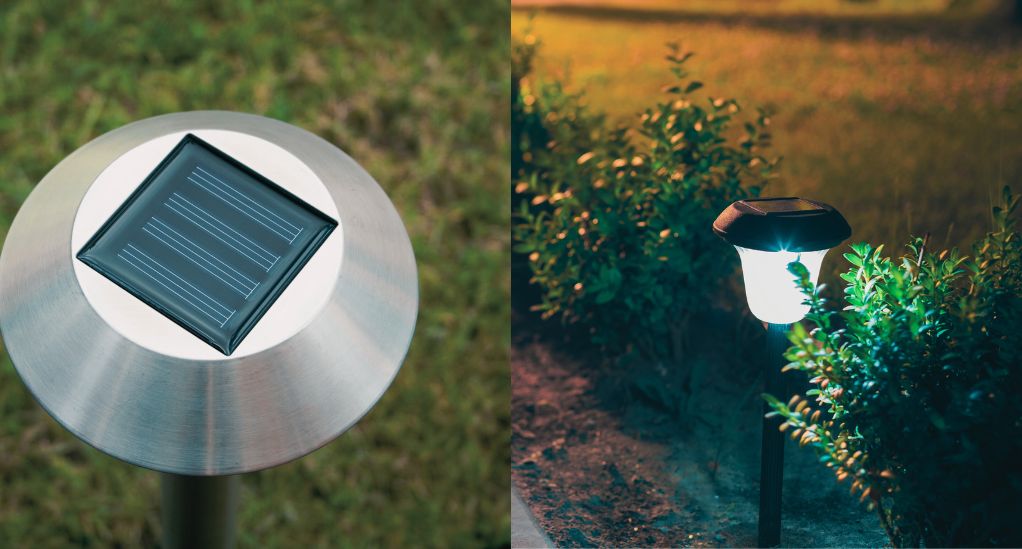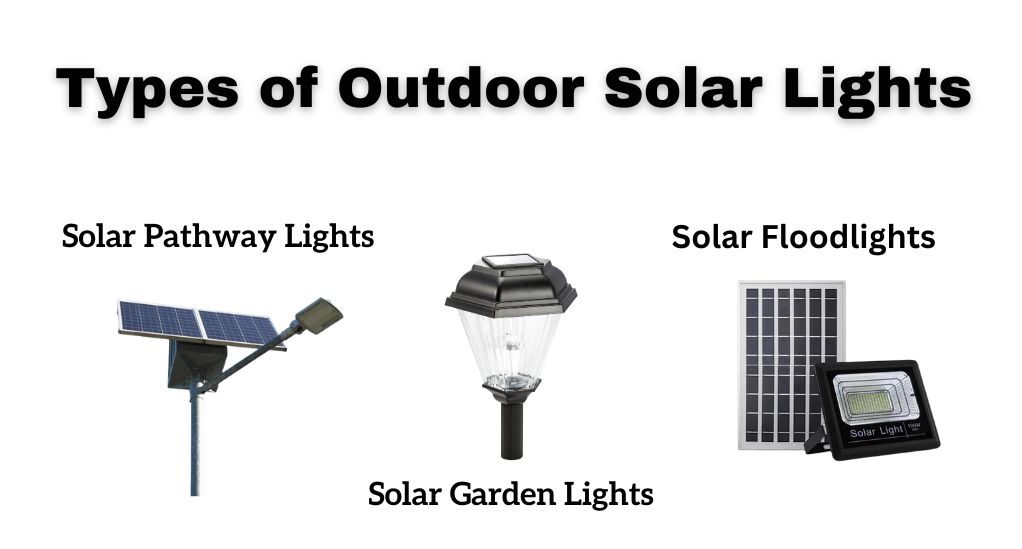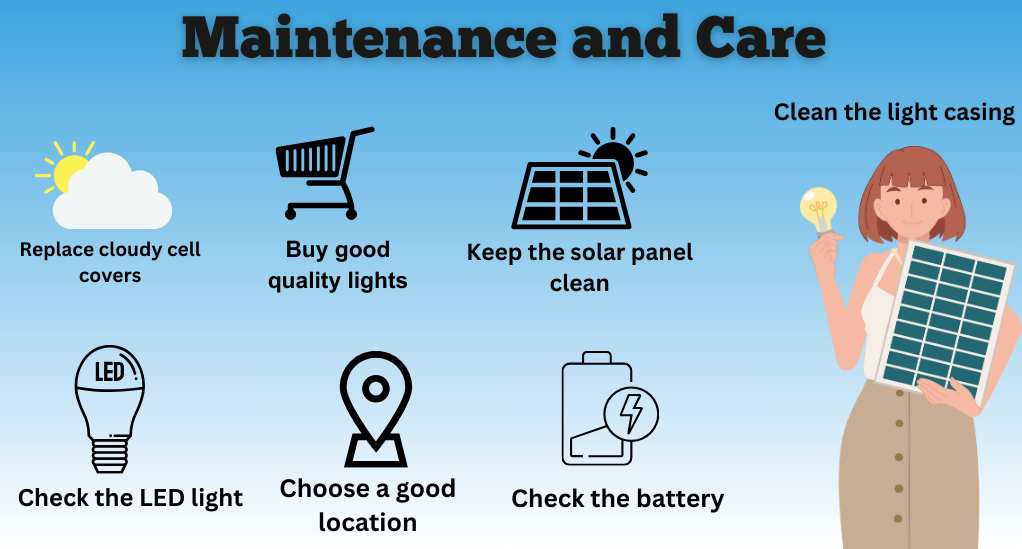In today’s eco-conscious era, outdoor solar lights have emerged as a shining example of sustainable lighting solutions. This introduction sets the stage for our comprehensive guide by providing a brief overview of outdoor solar lights, highlighting their growing popularity, and underscoring the specific advantages of solar pathway lights.
A Brief Overview of Outdoor Solar Lights
Outdoor solar lights are ingenious devices that capture sunlight during the day and convert it into electrical energy, which is then used to illuminate outdoor spaces at night. They have gained immense popularity due to their environmental friendliness, cost-effectiveness, and ease of installation. These lights come in various forms, from simple garden pathway lights to powerful floodlights, catering to a wide range of outdoor lighting needs.

The Growing Popularity of Solar-Powered Lighting
The adoption of solar-powered lighting has witnessed a significant surge in recent years. This surge can be attributed to several factors, including increasing environmental awareness, advancements in solar technology, and the desire for energy-efficient solutions. As the world embraces sustainability, solar lights have become a symbol of progress in the field of outdoor illumination.
The Benefits of Solar Pathway Lights
Solar pathway lights, in particular, offer a myriad of benefits. They not only light the way in an elegant manner but also provide security, enhance curb appeal, and contribute to energy savings. Solar pathway lights are low-maintenance, cost-effective, and eco-friendly, making them an excellent choice for both residential and commercial outdoor lighting projects.
In the following sections, we will delve deeper into the world of outdoor solar lights, exploring various types, key features, and factors to consider when selecting the ideal lighting solution for your specific needs. Additionally, we’ll provide expert guidance on installation, maintenance, and how to make the most of these sustainable lighting options.
Types of Outdoor Solar Lights
In this section, we’ll delve into the diverse world of outdoor solar lights, exploring three prominent categories: Solar Pathway Lights, Solar Garden Lights, and Solar Floodlights. Each type serves unique purposes, possesses distinctive features, and offers specific benefits, catering to a wide range of outdoor lighting requirements.

Solar Pathway Lights
- Overview and Applications: Solar pathway lights are designed to illuminate walkways, driveways, and garden paths, enhancing both safety and aesthetics. They are a popular choice for homeowners looking to add charm to their outdoor spaces while ensuring well-lit pathways at night.
- Key Features and Benefits: Solar pathway lights typically feature stake or post designs for easy installation. They are equipped with photovoltaic panels to capture sunlight, rechargeable batteries for energy storage, and LED bulbs for efficient illumination. Key benefits include energy savings, minimal maintenance, and the ability to transform ordinary paths into enchanting walkways.
Solar Garden Lights
- Adding Elegance to Outdoor Spaces: Solar garden lights are all about enhancing the beauty of gardens, flowerbeds, and landscaping. These lights are strategically placed to highlight specific garden features, adding a touch of elegance and creating a captivating nighttime ambiance.
- Notable Features and Styles: Solar garden lights come in various styles, including lanterns, spotlights, and string lights. They are equipped with adjustable solar panels for optimal sun exposure and may offer color-changing LEDs or warm white light options. The notable features include versatility, weather resistance, and the ability to accentuate the landscape’s natural beauty.
Solar Floodlights
- Security and Ambiance Combined: Solar floodlights are designed for increased brightness and broader coverage, making them ideal for security purposes, accent lighting, or creating dramatic outdoor effects.
- Brightness and Coverage Considerations: These lights offer adjustable brightness settings, motion sensors, and wide-angle coverage. They are often used to illuminate large areas such as driveways, patios, and entrances. Factors to consider include lumens (brightness), detection range, and the duration of light output on a single charge.
In the subsequent sections, we’ll delve deeper into the factors to consider when choosing outdoor solar lights and provide expert guidance to help readers select the perfect lighting solution for their specific outdoor lighting needs.
Factors to Consider When Choosing Outdoor Solar Lights
Selecting the right outdoor solar lights involves a careful evaluation of various factors. In this section, we’ll explore these crucial considerations step by step to help readers make informed decisions.
Brightness and Lumens: Shedding Light on Illumination
Brightness and Lumens The brightness of solar lights is measured in lumens. Consider the desired level of illumination for your outdoor area. Pathway lights typically require fewer lumens, while floodlights for security may need higher lumens. A comparison table can help readers understand the relationship between lumens and lighting needs.
Battery Life: Keeping the Lights On
Battery Life The duration of illumination depends on the capacity of the rechargeable battery. A larger battery typically offers longer runtimes. Readers will learn how to assess battery life and choose lights that meet their specific needs. Tables can display estimated runtimes based on different battery capacities.
Installation and Placement: Maximizing Sun Exposure
Installation and Placement Solar lights rely on sunlight to charge their batteries. Proper placement and orientation are essential for optimal performance. Readers will gain insights into where and how to install solar lights to ensure they receive adequate sunlight throughout the day. Diagrams and placement suggestions can be useful.
Design Options: Merging Functionality with Aesthetics
Design Options Outdoor solar lights come in a variety of styles and finishes. Readers can explore different designs that align with their outdoor aesthetics. Consider including a section on modern solar light design trends and how they can complement various outdoor settings.
Durability and Weather Resistance: Lights that Last
Durability and Weather Resistance Outdoor solar lights should withstand the elements. We’ll discuss materials, IP (Ingress Protection) ratings, and how to choose lights that are durable and weather-resistant. A comparison table can list different lights’ durability features.
By addressing these key factors in detail, readers will be well-equipped to make informed decisions when selecting outdoor solar lights that best match their specific lighting needs, ensuring they get the most out of their solar lighting investment.
Choosing the Right Solar Lights for Your Needs
Selecting outdoor solar lights that perfectly align with your requirements involves careful consideration of your outdoor space, the intended purpose of the lighting, and the creation of a cohesive lighting plan. In this section, we’ll guide readers through these essential steps.
Assessing Your Outdoor Space
Assessing Your Outdoor Space Before choosing solar lights, take stock of your outdoor area. Measure the dimensions, identify key features, and note areas that require illumination. Readers will learn how to conduct a comprehensive assessment, ensuring they don’t overlook any lighting needs.
Matching Lights to Purpose (Pathway Lighting, Ambiance, Security)
Matching Lights to Purpose Different outdoor areas serve various purposes, and solar lights should be selected accordingly. We’ll explore the specific lighting needs for common purposes, including pathway lighting for safety, ambiance lighting for aesthetics, and security lighting for safety. A comparison table can highlight the ideal types of lights for each purpose.
Creating a Unified Lighting Plan
Creating a Unified Lighting Plan To achieve a harmonious outdoor lighting scheme, readers will discover the importance of creating a lighting plan. This plan should outline the placement, types, and specifications of solar lights throughout the outdoor space. Sample lighting plans and diagrams can assist readers in visualizing their lighting designs.
By following these steps, readers will gain a comprehensive understanding of how to choose the right outdoor solar lights that not only meet their lighting needs but also enhance the beauty and functionality of their outdoor spaces. This section will empower them to make well-informed decisions, ensuring that their solar lighting project is both practical and aesthetically pleasing.
Maintenance and Care for Longevity
To ensure that your outdoor solar lights continue to function efficiently and have a long lifespan, proper maintenance and care are essential. In this section, we’ll provide readers with valuable tips and guidance on how to maintain their solar lights effectively.

Tips for Keeping Your Solar Lights Performing Efficiently
Tips for Efficiency Maintaining solar lights begins with understanding common issues that may affect their performance. We’ll discuss issues like reduced brightness, inconsistent operation, and how to troubleshoot and address them. Readers will learn practical tips, such as periodically cleaning the solar panels, checking for debris, and ensuring that the lights are receiving adequate sunlight.
Cleaning Solar Panels and Replacing Batteries
Cleaning Solar Panels Solar panels are at the heart of solar lights, and their cleanliness directly impacts efficiency. We’ll provide step-by-step instructions on how to clean solar panels safely and effectively, including recommended cleaning solutions and tools.
Replacing Batteries Over time, rechargeable batteries may degrade and lose their ability to hold a charge. We’ll guide readers on how to identify when it’s time to replace the batteries, how to select the right replacements, and how to safely perform the battery replacement process.Including tables or diagrams to illustrate the cleaning process and battery replacement can enhance the reader’s understanding and make maintenance tasks more approachable.
By following the maintenance tips and care guidelines outlined in this section, readers will be well-prepared to keep their outdoor solar lights in optimal working condition, ensuring that they continue to illuminate their outdoor spaces efficiently for years to come
Eco-Friendly Lighting: The Solar Advantage
In this section, we’ll delve into the environmental benefits of outdoor solar lights, emphasizing their capacity to reduce energy costs and minimize the overall environmental impact. Readers will gain insight into the sustainability advantages offered by solar lighting technology.
Reducing Energy Costs and Environmental Impact
Reducing Energy Costs Solar lights operate entirely on renewable solar energy, which means they don’t rely on electricity from the grid. This results in significant energy cost savings for homeowners and businesses. We’ll provide practical examples and calculations to illustrate how solar lights can lead to reduced energy bills.
Environmental Impact By using solar lights, readers can actively contribute to reducing their carbon footprint. We’ll explore the environmental impact of traditional lighting sources and contrast it with the eco-friendliness of solar lights, including their role in reducing greenhouse gas emissions and dependence on fossil fuels.
Harnessing the Power of the Sun
Harnessing Solar Energy Readers will gain a deeper understanding of how solar lights convert sunlight into electricity through photovoltaic panels. We’ll explain the basic principles of solar energy capture, storage, and utilization, highlighting the role of key components like solar cells and rechargeable batteries.
Practical Applications This section will also discuss various practical applications of solar energy beyond outdoor lighting, such as solar-powered water heaters, chargers, and off-grid solar systems. Readers will discover how harnessing the power of the sun can extend to other aspects of sustainable living.Including charts or tables that showcase energy savings and environmental impact comparisons between solar lights and traditional lighting methods can provide readers with compelling visual evidence of the solar advantage.
By the end of this section, readers will have a comprehensive understanding of the eco-friendly attributes of outdoor solar lights, motivating them to make environmentally responsible choices while enjoying the many benefits of solar-powered illumination.
Conclusion
In the radiant world of outdoor solar lights, we’ve embarked on a journey to discover not just illumination but also sustainability, functionality, and aesthetics. From understanding the diverse types of solar lights, their specific applications, and the key factors to consider when making a choice, we’ve equipped ourselves with the knowledge needed to transform our outdoor spaces into well-lit, inviting sanctuaries.
Yet, our exploration extends beyond the practicalities. We’ve unveiled the environmental advantages of solar lighting, appreciating how harnessing the power of the sun can reduce energy costs, minimize our carbon footprint, and play a vital role in a sustainable future. As we illuminate our pathways and gardens with solar lights, we’re also lighting the way toward a greener, cleaner world. Armed with this knowledge, let us step into the world of outdoor solar lights, enhancing our surroundings while embracing the eco-friendly brilliance of solar technology.

